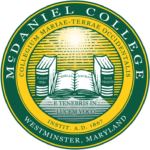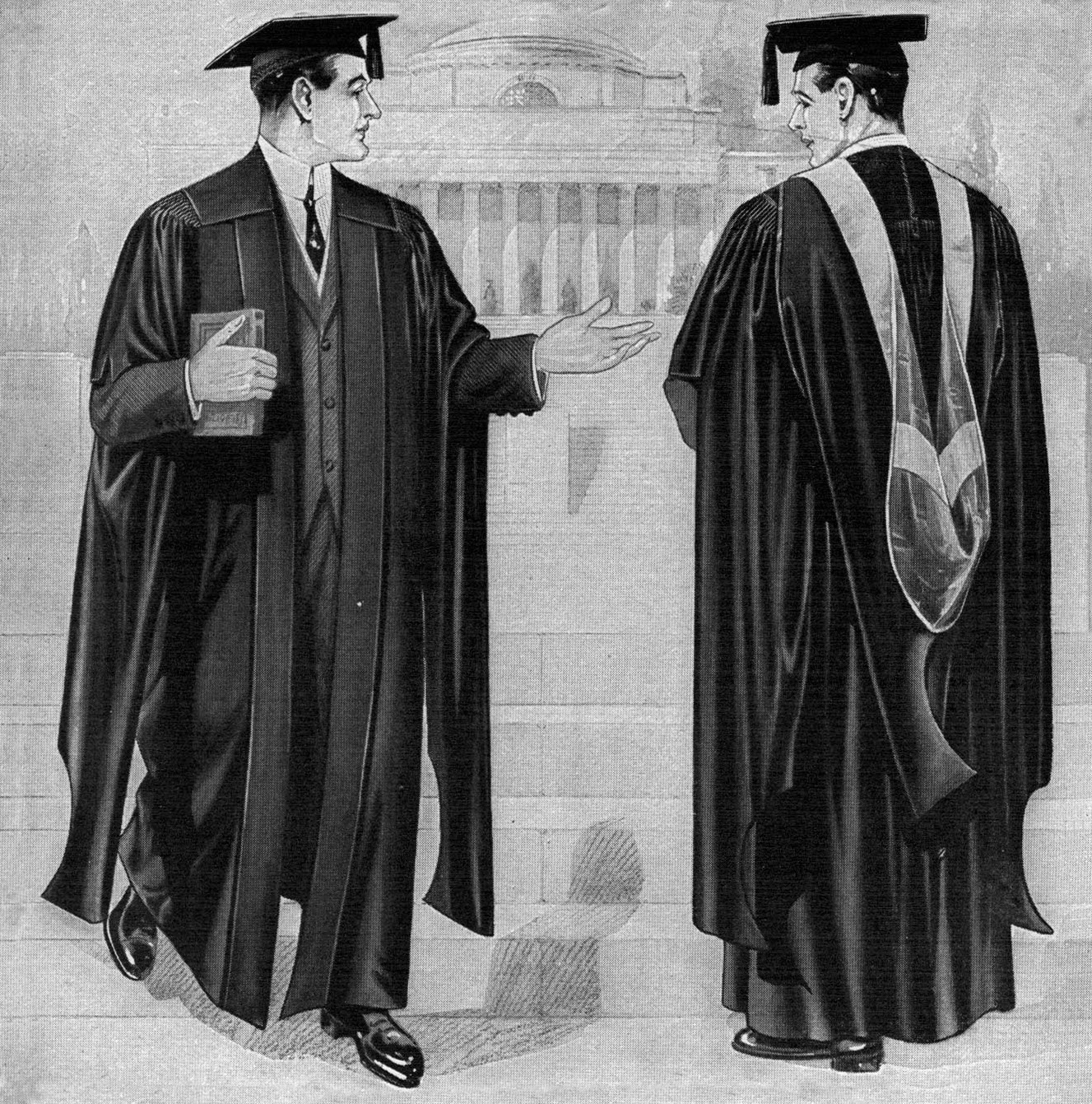McDaniel College
Maryland
1867
Formerly “Western Maryland College”




Western Maryland College students adopted black, red, and white as the school colors in 1889. The college’s Athletic Association requested that the college colors be changed to old gold and olive green in 1893, a request that was approved by a faculty committee. Because uniforms were difficult to find in those colors, in 1900 the Athletic Association asked the faculty to select new colors for the college, but the faculty refused. Western Maryland’s shade of olive green was dark, and in Our College Colors (1949) by Henry L. Snyder, the colors of Western Maryland College were described as dark green and old gold.

Citations in the World Almanac (listed by cover date; color information is from the previous year): green/old gold (1915); green/gold (1916-1935)
Western Maryland College was an early client of academic costume manufacturer Cotrell & Leonard, as it appeared in a list of college colors appended to the copy of the 1895 Intercollegiate Code of Academic Costume the Intercollegiate Commission sent to the 1896 Living Church Quarterly (published in December 1895) but not in the 1894 World Almanac, which was the source of most of the college colors the Commission compiled for that appendix. In the Cotrell & Leonard information in the Living Church Quarterly, Western Maryland was cited as having a green and gold hood lining – not olive green and old gold – and the heraldic division of those colors was not described in that list.

However, the chapter on American academic hoods in the 1923 edition of The Degrees and Hoods of the World’s Colleges and Universities by Frank Haycraft included a description of the 1895 Intercollegiate Code of Academic Costume and a long list of schools, each with a description of its hood lining. The chapter was written in a way that implied that this list was from the Intercollegiate Bureau of Academic Costume (IBAC). Actually, most of Haycraft’s American hood information was out of date (from c.1912) or inaccurate, derived from a chart of college colors in the 1909 and 1910 editions of the World Almanac, with the first color in this chart interpreted by Haycraft to indicate the lining color of the school’s hood and the second color in the chart interpreted to indicate the chevron color of the school’s hood.
That said, some of the schools in Haycraft’s book did not appear in the 1909 and 1910 editions of the World Almanac or were listed differently in those sources. So apparently Haycraft was given a partial list of college and university hoods from the IBAC, which he supplemented with additional schools from the 1909 or 1910 World Almanac. Western Maryland College was an example of an institution that did not appear in the 1909 and 1910 editions of the World Almanac, which means Haycraft’s citation must have come from the Intercollegiate Bureau, not the World Almanac.
In this list, Haycraft correctly described Western Maryland’s hood lining as olive green with an old gold chevron, a description that did not change in subsequent IBAC lists. This new description of the college’s hood lining suggests that the Bureau had revised Western Maryland’s hood lining pattern between 1895 and 1912 to more accurately depict the official shades of the college’s colors.
One should note that the Intercollegiate Bureau of Academic Costume defined “olive green” as a dark shade of olive green, as did Western Maryland College.